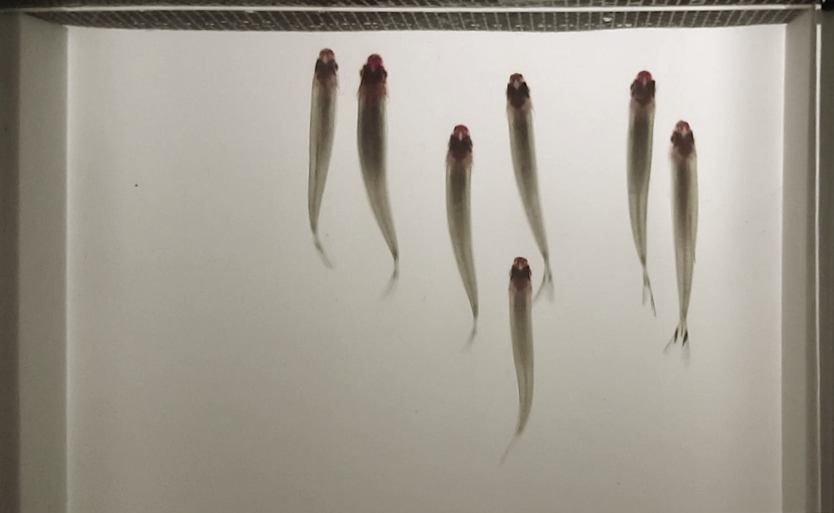Simple phalanx pattern leads to energy saving in cohesive fish schooling
I. Ashraf, H. Bradshaw, T. T. Ha, J. Halloy, R. Godoy-Diana, B. Thiria
PNAS 114 (36) 9599-9604 (2017)
[doi:10.1073/pnas.1706503114]
Synchronisation and collective swimming patterns in Hemigrammus bleheri
I. Ashraf, R. Godoy-Diana, J. Halloy, B. Collignon, B. Thiria
Journal of the Royal Society Interface 13 20160734 (2016)
[doi:10.1098/rsif.2016.0734] 
The question of how individuals in a population organize when living in groups arises for systems as different as a swarm of microorganisms or a flock of seagulls. The different patterns for moving collectively involve a wide spectrum of reasons, such as evading predators or optimizing food prospection. Also, the schooling pattern has often been associated with an advantage in terms of energy consumption. We use a popular aquarium fish, the red nose tetra fish, Hemigrammus bleheri, which is known to swim in highly cohesive groups, to ana- lyze the schooling dynamics. In our experiments, fish swim in a shallow-water tunnel with controlled velocity, Continue reading “Synchronisation and pattern formation in fish swimming”
